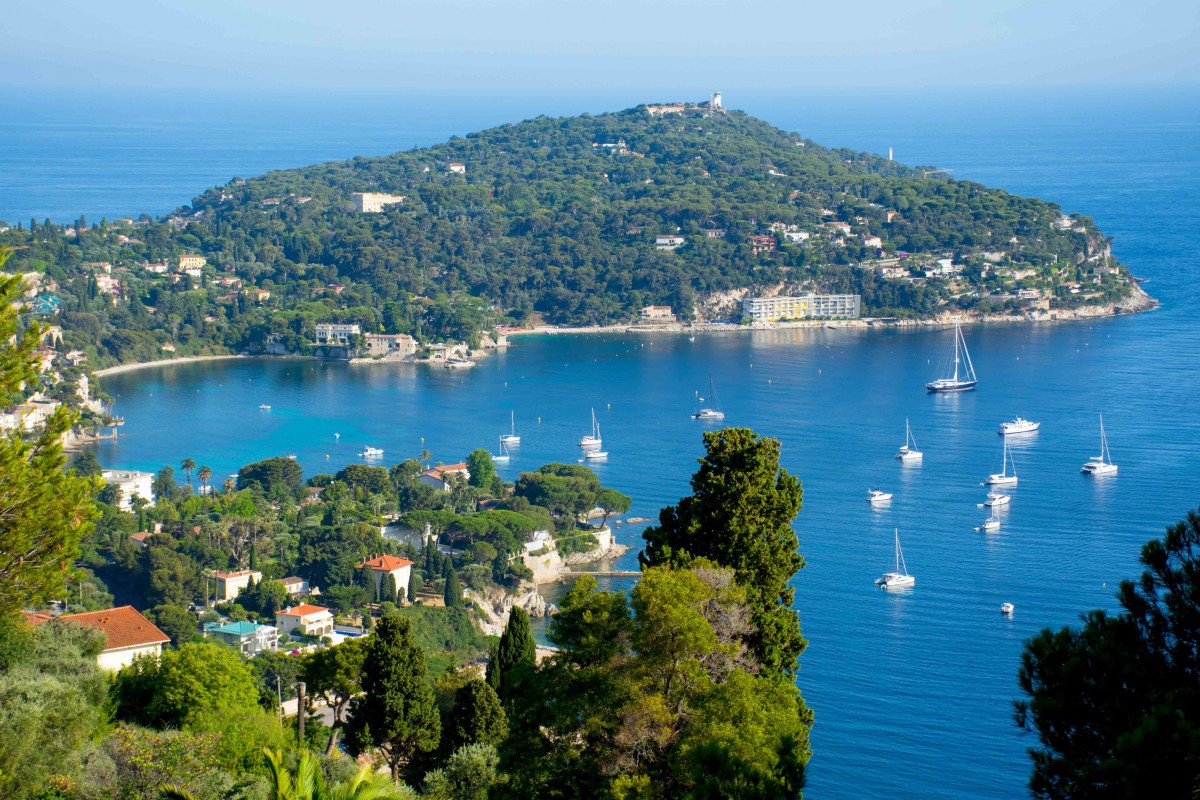The seaside resort of Saint-Jean-Cap-Ferrat lies on a beautiful peninsula on the French Riviera between Nice and Monaco. Saint-Jean-Cap-Ferrat is primarily a fashionable destination amongst celebrities and millionaires, with many opulent villas built on a great site.
Plan your trip to Saint-Jean-Cap-Ferrat!
- 🏨 Find the best accommodations in Villefranche-sur-Mer and the region on Booking.com
- 🙋♀️ Get the PASS CÔTE D’AZUR and take your pick from more than 100 unique experiences!
- 🌴 Read our Discovery Guides of Beaulieu-sur-Mer, Villefranche-sur-Mer, Eze, La Turbie, Menton, and Monaco.
- 🎯 Take a guided hidden gem tour of Monaco
- 🥗 Experience the culture and food of Old Nice on a 4-hour sightseeing and tasting tour
- 📚 Read the DK Eyewitness Provence and the Côte d’Azur Travel Guide
- 🤩 Get familiar with the French Riviera
- 🗺 Download the touristic map of Saint-Jean-Cap-Ferrat
- 🚻 Public toilets are located in the centre of the village.
- 🚗 Park at the Parking du Centenaire (free from 1st of October to 30th of April).
Situation of Saint-Jean-Cap-Ferrat
Today part of Nice’s suburbs, Saint-Jean-Cap-Ferrat is a commune situated in the département of Alpes Maritimes between Villefranche-sur-Mer and Beaulieu-sur-Mer. The limits of Saint-Jean-Cap-Ferrat include the whole peninsula of Cap Ferrat.

There are approximately 2,000 inhabitants in Saint-Jean-Cap-Ferrat called “Saint -Jeannois” and “Saint-Jeannoises”. Saint-Jean-Cap-Ferrat is known for its luxurious villas (more than 500) hidden by luxuriant Mediterranean vegetation…
Since the 1950s, Saint-Jean-Cap-Ferrat has welcomed celebrities and politicians from around the world: Edith Piaf, Charlie Chaplin, Elizabeth Taylor and Richard Burton, Jean-Paul Belmondo, Roger Moore, Tony Curtis and Romy Schneider (who was married there in 1966), General de Gaulle, Valéry Giscard d’Estaing, Raymond Barre, Winston Churchill, George Bush, Bill Clinton, Boris Yeltsin…
![Cap Ferrat, Villefranche and Nice © Broenberr - licence [CC BY-SA 3.0] from Wikimedia Commons](https://frenchmoments.eu/wp-content/uploads/2014/08/Cap-Ferrat-Villefranche-and-Nice-©-Broenberr-licence-CC-BY-SA-3.0-from-Wikimedia-Commons.jpg)
Saint-Jean-Cap-Ferrat: a bit of History
![Saint-Jean-Cap-Ferrat © Saschaporsche - licence [CC BY-SA 3.0] from Wikimedia CommonsJPG](https://frenchmoments.eu/wp-content/uploads/2014/08/Saint-Jean-Cap-Ferrat-©-Saschaporsche-licence-CC-BY-SA-3.0-from-Wikimedia-CommonsJPG.jpg)
In Ancient Times, the peninsula was known to Greeks as Anao.
In the 6th century, the peninsula hosted its first celebrity: St. Hospitius, a hermit from Egypt who lived in a dilapidated tower on the site of today’s Chapel St. Hospice. According to tradition, St. Hospitius was taken prisoner during one of the Lombards’ raids in the region. He worked a miracle in their favour and contributed to their conversion to Christianity.
In the 9th and 10th centuries, the biggest threat came from the south, with the Saracens occupying the peninsula until their defeat in the 11th century.
Then, the peninsula of Saint-Jean-Cap-Ferrat shared the same history as the neighbouring town of Villefranche-sur-Mer as it was part of the same commune. The hamlet of Saint-Jean consisted of tiny fishermen’s houses clustered around the church and the harbour.
In the 14th century, Villefranche (including Saint-Jean) and the County of Nice became part of the Duchy of Savoy.
Between 1793 and the end of the Napoleonic Empire in 1814, the French occupied Saint-Jean and the County of Nice. By the Congress of Vienna in 1815, the County was retroceded to the Kingdom of Piedmont-Sardinia.
In 1860, the County of Nice was given to France following a referendum.
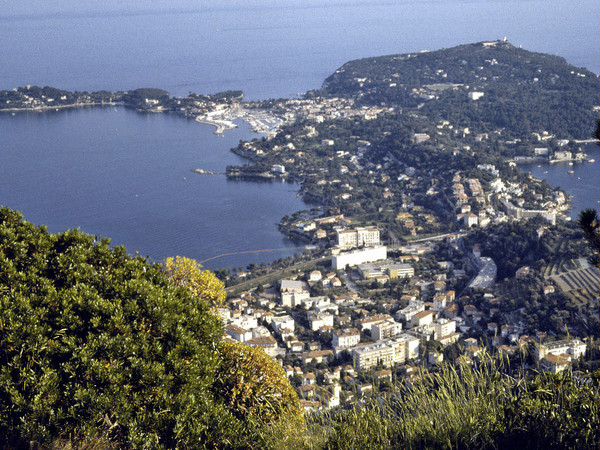
The first villas began to appear in 1880 along the Promenade Maurice Rouvier between Saint-Jean-Village and Beaulieu.
In 1904, Saint-Jean separated from Villefranche-sur-Mer and became a commune known as Saint-Jean-sur-Mer, later renamed Saint-Jean-Cap-Ferrat.
During the Belle Époque, Saint-Jean attracted celebrities and upper-class visitors who built grand and extravagant villas during their winter vacations.
Sightseeing
The village centre of Saint-Jean is relatively small but has many cafés, restaurants and shops along the quays.
The harbour
![Saint-jean-Cap-Ferrat © Wahrig2003 - licence [CC BY-SA 3.0] from Wikimedia Commons](https://frenchmoments.eu/wp-content/uploads/2014/08/Saint-jean-Cap-Ferrat-©-Wahrig2003-licence-CC-BY-SA-3.0-from-Wikimedia-Commons.jpg)
This is where the small fishing village of Saint-Jean started to grow. Between 1840 and 1876, convicts imprisoned in the Villefranche prison worked on its extension and in 1972, a new marina was inaugurated to accommodate 560 boats, including 400 at private moorings.
Saint-Jean-Baptiste Church
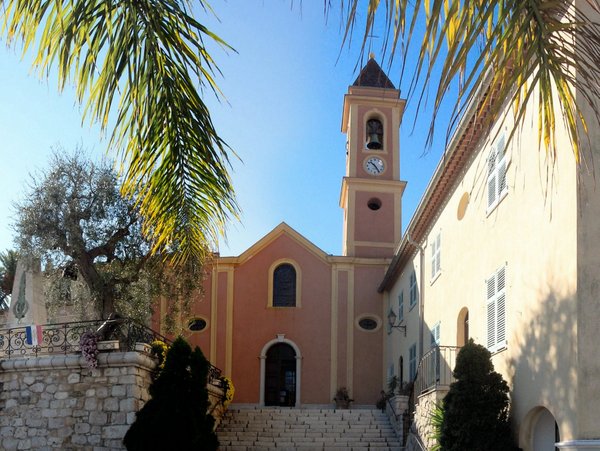
Edified in the 19th century, the church replaced a former sanctuary from the 11th century.
On the 24 June of each year takes place a procession during which the statue of Saint John the Baptist is brought by the locals to the pier of the old port.
Saint Hospice Chapel
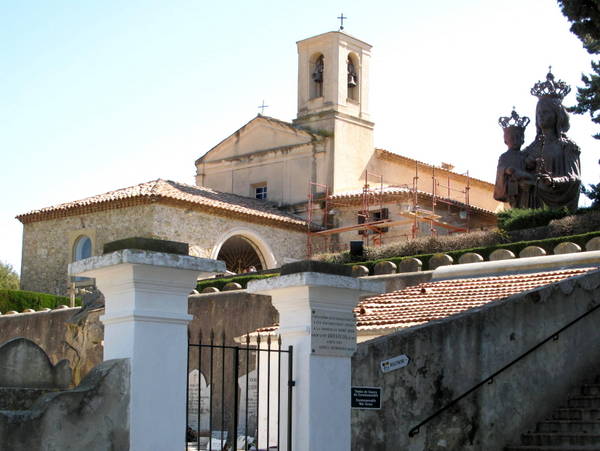
The Chapel was built in the 17th century on the ruins of a tower which housed the hermit St Hospitius. Next to the chapel stands an 11-metre high bronze statue of the Virgin.
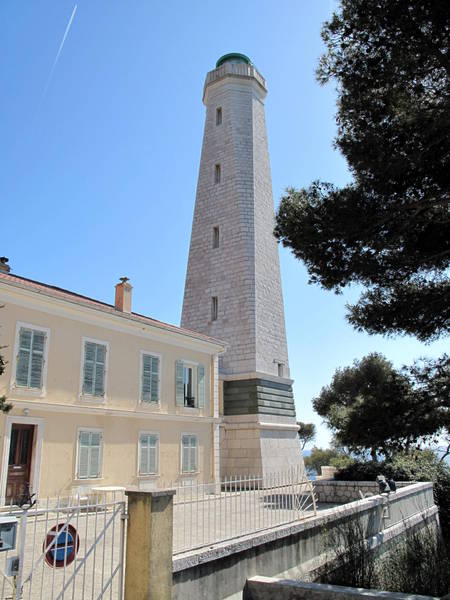
The Lighthouse
A lighthouse was built in 1732 to replace a former fire tower from the 16th century. Destroyed in 1944, it was rebuilt after WW2.
The Semaphore
The Semaphore (Coastguard Station) was built in 1862 by order of Napoleon III. Managed by the Marine Nationale (French navy), it controls the movement of shipping in the area and also keeps a watch out for fires starting along the coast.
Grand Hôtel
The peninsula’s tip is occupied by the Grand Hôtel du Cap, a luxurious palace surrounded by a beautiful garden. The hotel was built in 1908 to accommodate a wealthy cosmopolitan clientele. In 2011, it receives the prestigious label ‘palace’ (5 stars).
Villa Ephrussi-de-Rothschild
![Villa Ephrussi de Rothschild © Berthold Werner - licence [CC BY-SA 3.0] from Wikimedia Commons](https://frenchmoments.eu/wp-content/uploads/2014/08/Villa-Ephrussi-de-Rothschild-2-©-Berthold-Werner-licence-CC-BY-SA-3.0-from-Wikimedia-Commons.jpg)
Overlooking the Mediterranean coastline, the Villa Ephrussi-de-Rothschild is undoubtedly one of the jewels of the French Riviera.
During the Belle Époque, Baroness Ephrussi de Rothschild (1864-1934) bought a 7-hectare hillside overlooking the sea on the narrow isthmus of the peninsula. From 1905 to 1912, she had a villa built there inspired by the Italian Renaissance style with a Spanish influence. Also called Villa Île-de-France, the residence was designed by French architect Aaron Messiah. The new residence intended to exhibit her impressive collection of more than 5,000 works of art from the 14th to 19th centuries: 18th-century furniture, lamps, oil paintings, tapestries, china from Vincennes and the Royal Manufacturers of Sèvres…

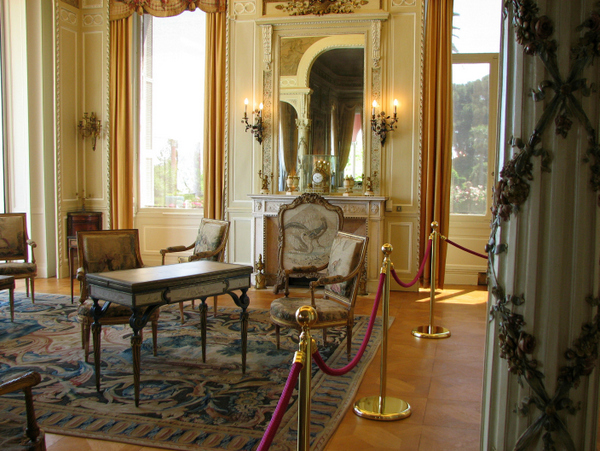

The villa is surrounded by nine beautiful themed gardens (Spanish, French, Provençal, Florentine, Japanese, Exotic, Lapidary…) inspired by the travels of the Baroness. These elaborate gardens, designed by landscape architect Achille Duchêne, have been listed by the French Ministry of Culture as “Jardin Remarquable”.
View of the villa from the formal garden and its ponds:
![Villa Ephrussi de Rothschild © Berthold Werner - licence [CC BY-SA 3.0] from Wikimedia Commons](https://frenchmoments.eu/wp-content/uploads/2014/08/Villa-Ephrussi-de-Rothschild-©-Berthold-Werner-licence-CC-BY-SA-3.0-from-Wikimedia-Commons.jpg)
View of the gardens from the villa:
![Gardens of Villa Ephrussi de Rothschild © Berthold Werner - licence [CC BY-SA 3.0] from Wikimedia Commons](https://frenchmoments.eu/wp-content/uploads/2014/08/Gardens-of-Villa-Ephrussi-de-Rothschild-©-Berthold-Werner-licence-CC-BY-SA-3.0-from-Wikimedia-Commons.jpg)
The stone garden:
![Stone Garden at Villa Ephrussi de Rothschild © Testus - licence [CC BY-SA 3.0] from Wikimedia Commons](https://frenchmoments.eu/wp-content/uploads/2014/08/Stone-Garden-at-Villa-Ephrussi-de-Rothschild-©-Testus-licence-CC-BY-SA-3.0-from-Wikimedia-Commons.jpg)
The Spanish garden:
![Spanish Garden at Villa Ephrussi de Rothschild © Berthold Werner - licence [CC BY-SA 3.0] from Wikimedia Commons](https://frenchmoments.eu/wp-content/uploads/2014/08/Spanish-Garden-at-Villa-Ephrussi-de-Rothschild-©-Berthold-Werner-licence-CC-BY-SA-3.0-from-Wikimedia-Commons.jpg)
On the death of the Baroness in 1934, the entire estate and its collections were donated to the Academy of Fine Arts of the Institute of France.
Each year, more than 130,000 people visit the domain, making it one of the most popular attractions between Nice and Menton.
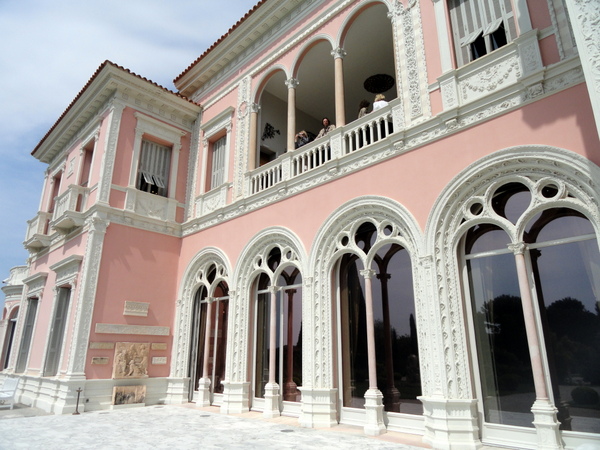
Sentier des douaniers
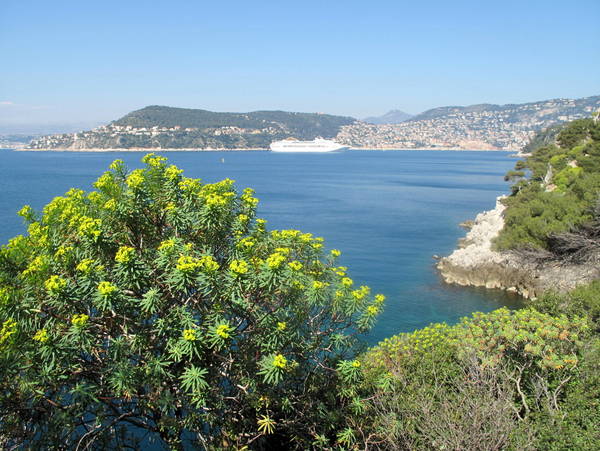
The peninsula of Saint-Jean-Cap-Ferrat is best enjoyed by walking along one of the three signposted tracks. In addition to the Saint-Hospice walk and the Maurice Rouvier walk between Saint-Jean and Beaulieu, the Peninsula Tour walk is a must-to-see when visiting the region.
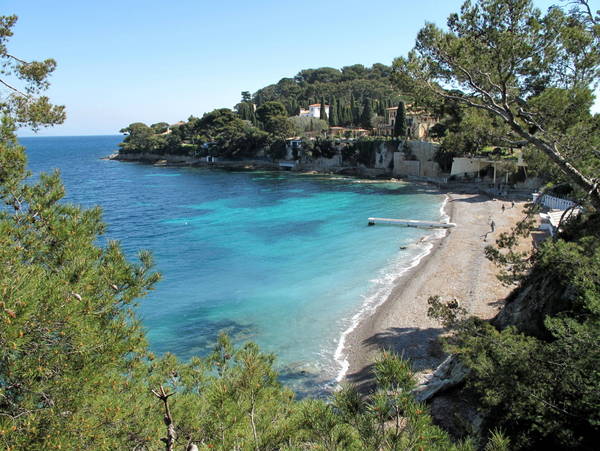
Running around the peninsula, the path is known as “sentier des douaniers” and is 7 km long. It takes approximately 1.30 hrs to complete. The path follows the coast passing in front of and below magnificent villas or through secluded coves with glimmering views of the French Riviera coastline from Italy to the Esterel mountains.
How to get there
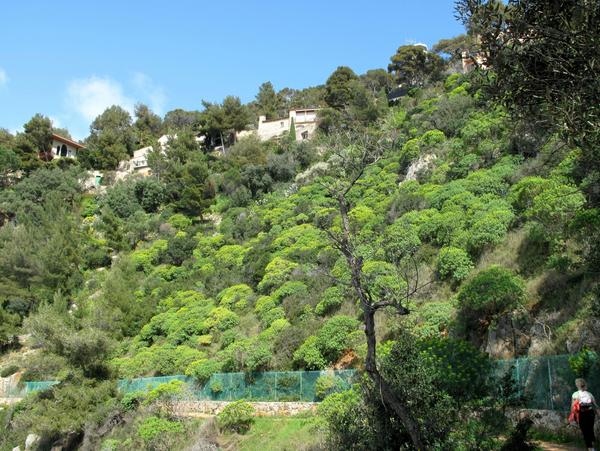
By car
Saint-Jean-Cap-Ferrat is easily accessible from Nice via the Corniche Inférieure (Lower Corniche or D6098), which follows the coastline around Mont Boron and crosses Villefranche, or via the D6007-D133 roads, which give more direct access.
By train
The railway station of Beaulieu-sur-Mer is situated on the Nice-Ventimiglia TER line with frequent service.
From the station of Beaulieu-sur-Mer, bus #81 reaches the peninsula of Saint-Jean-Cap-Ferrat.
By air
Nice, France’s third airport after Paris CDG and Orly, is situated only 18 km from Saint-Jean-Cap-Ferrat.
English-French Vocabulary
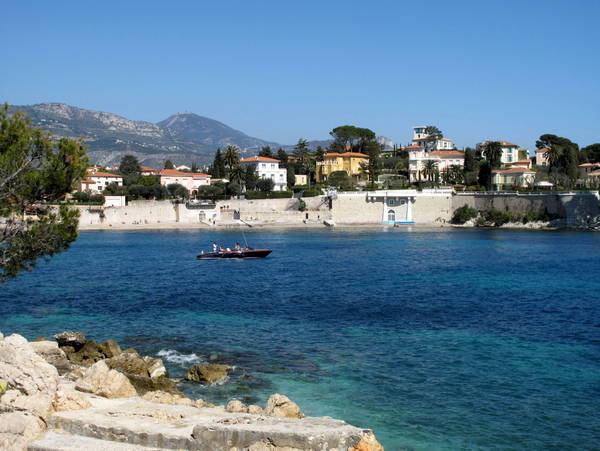
(f) for féminin, (m) for masculin, (adj) for adjective and (v) for verbs
- Alps = Alpes (f,p)
- bay = baie (f)
- beach = plage (f)
- cape = cap (m)
- citadel = citadelle (f)
- county = comté (m)
- duchy = duché (m)
- Greek = Grec (m) / Grecque (f)
- French Riviera = Côte d’Azur (f)
- harbour = port (m)
- hermit = ermite (m)
- hill = colline (f)
- House of Savoy = Maison de Savoie (f)
- invasion = invasion (f)
- lighthouse = phare (m)
- marina = port de plaisance (m)
- Maritime Alps = Alpes Maritimes (f,p)
- Mediterranean Sea = Mer Méditerranée (f)
- mountain = montagne (f)
- peninsula = péninsule (f)
- port = port (m)
- Roman = Romain (m) / Romaine (f)
- villa = villa (f)
Featured image: The peninsula of Saint-Jean-Cap-Ferrat – Stock Photos from Kovankin Sergey – Shutterstock

